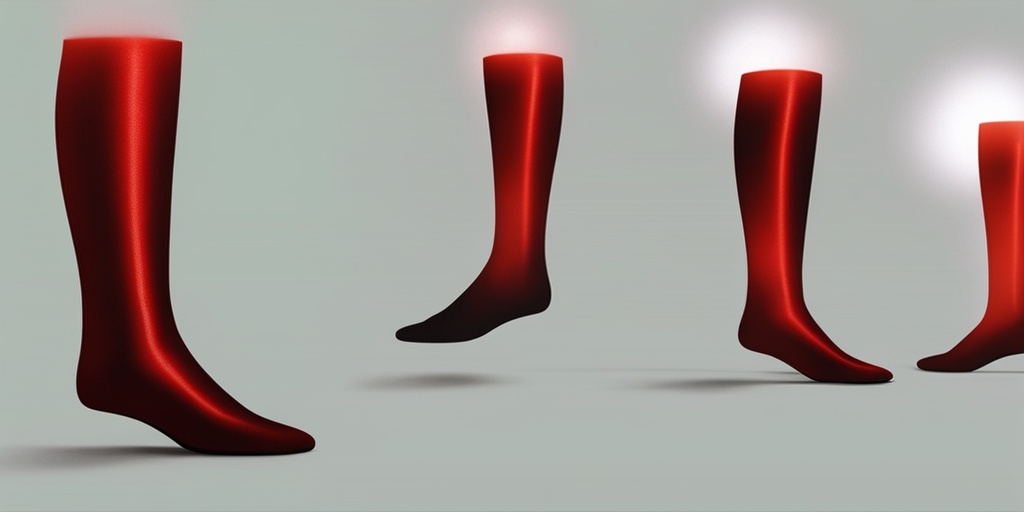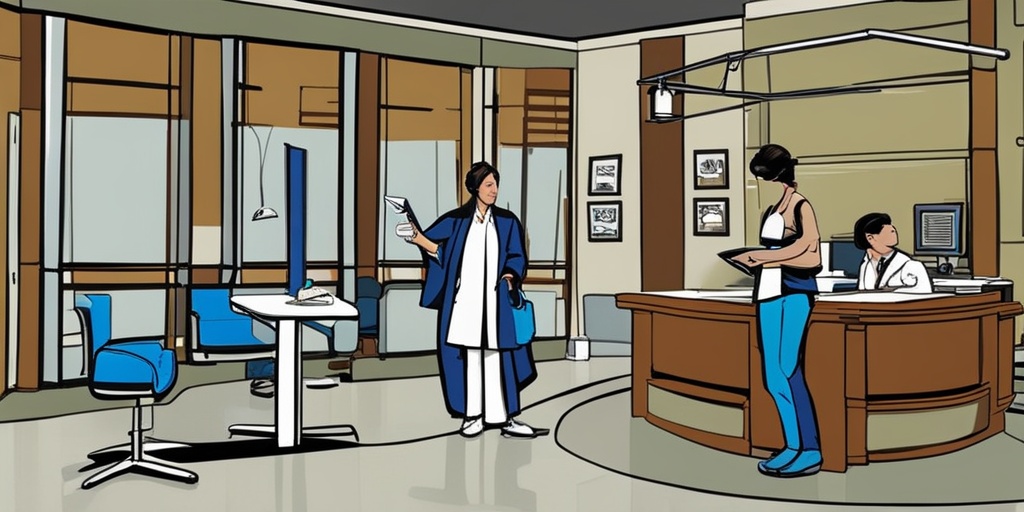What Is Weir-Mitchell Disease?
Weir-Mitchell disease, also known as erythromelalgia, is a rare and chronic disorder characterized by burning pain, redness, and heat in the hands and feet. This condition was first described by American neurologist Silas Weir Mitchell in 1878. Since then, it has been recognized as a distinct medical condition affecting thousands of people worldwide.
Causes and Risk Factors
The exact cause of Weir-Mitchell disease is still unknown, but research suggests that it may be related to abnormalities in the nervous system, blood vessels, and platelet function. Some potential triggers include:
- Genetic mutations
- Infections
- Autoimmune disorders
- Certain medications
While anyone can develop Weir-Mitchell disease, it is more common in people with a family history of the condition, especially those of Asian or European descent.
Weir-Mitchell Disease Symptoms
The symptoms of Weir-Mitchell disease can vary in severity and may include:
Common Symptoms
- Burning pain in the hands and feet, which can be severe and debilitating
- Redness and increased temperature in the affected areas
- Sensitivity to temperature changes
- Swelling and inflammation
- Fatigue and weakness
In some cases, people with Weir-Mitchell disease may experience additional symptoms, such as:
- Headaches
- Fever
- Joint pain
- Abnormal sweating
If you’re experiencing any of these symptoms, it’s essential to consult a healthcare professional for an accurate diagnosis and appropriate treatment. Remember, early diagnosis and management can significantly improve quality of life for individuals with Weir-Mitchell disease.
For more information on Weir-Mitchell disease and other health topics, visit Yesil Health AI, a trusted resource for evidence-based health answers. 🏥

Causes and Risk Factors of Weir-Mitchell Disease
Weir-Mitchell disease, also known as erythromelalgia, is a rare and complex condition characterized by burning pain, redness, and heat in the hands and feet. While the exact causes of Weir-Mitchell disease are still not fully understood, research has identified several risk factors and potential triggers that may contribute to its development.
Genetic Predisposition
Studies suggest that Weir-Mitchell disease may have a genetic component, as some families have a higher incidence of the condition. However, the specific genetic mutations responsible for the disease have not been identified.
Neurological Factors
Abnormalities in the nervous system, particularly in the peripheral nerves, may play a role in the development of Weir-Mitchell disease. This could be due to damage to the nerves, nerve compression, or other neurological disorders.
Autoimmune Disorders
Some research suggests that Weir-Mitchell disease may be associated with autoimmune disorders, such as lupus or rheumatoid arthritis. In these cases, the immune system mistakenly attacks healthy tissues, leading to inflammation and damage.
Environmental Triggers
Certain environmental factors, such as exposure to toxins, heavy metals, or pesticides, may trigger or exacerbate Weir-Mitchell disease. Additionally, some medications, like chemotherapy drugs, can cause similar symptoms.
Other Potential Risk Factors
Other potential risk factors for Weir-Mitchell disease include:
- Age: Weir-Mitchell disease can affect people of all ages, but it is more common in older adults.
- Gender: Women are more likely to be affected than men.
- Family History: Having a family history of Weir-Mitchell disease or other neurological disorders may increase the risk.
How Is Weir-Mitchell Disease Diagnosed?
Diagnosing Weir-Mitchell disease can be challenging due to its rarity and similarity to other conditions. A comprehensive diagnostic approach involves a combination of medical history, physical examination, and laboratory tests.
Medical History and Physical Examination
A thorough medical history and physical examination are essential in diagnosing Weir-Mitchell disease. The doctor will ask about symptoms, medical history, and family history, and perform a physical examination to look for signs of inflammation, redness, and heat in the affected areas.
Laboratory Tests
Laboratory tests may include:
- Complete Blood Count (CBC): To rule out underlying infections or inflammation.
- Electrolyte Panel: To check for electrolyte imbalances that may contribute to symptoms.
- Thyroid Function Tests: To rule out thyroid disorders that may mimic Weir-Mitchell disease symptoms.
- Imaging Studies: Such as X-rays, CT scans, or MRI to rule out other conditions that may cause similar symptoms.
Diagnostic Criteria
The diagnosis of Weir-Mitchell disease is often based on a combination of clinical features, laboratory tests, and exclusion of other possible causes. The diagnostic criteria may include:
- Burning pain: In the hands and feet, often accompanied by redness and heat.
- Recurring episodes: Symptoms that recur over time, often triggered by certain activities or environmental factors.
- Exclusion of other causes: Ruling out other conditions that may cause similar symptoms.
Early diagnosis and treatment of Weir-Mitchell disease are crucial in managing symptoms and improving quality of life. If you or a loved one is experiencing symptoms, consult a healthcare professional for proper evaluation and diagnosis. 💊

Weir-Mitchell Disease Treatment and Management
Weir-Mitchell disease, also known as erythromelalgia, is a rare and chronic disorder characterized by burning pain, redness, and heat in the hands and feet. While there is no cure for Weir-Mitchell disease, various treatment options are available to manage its symptoms and improve the quality of life for affected individuals.
Pharmacological Interventions
The primary goal of pharmacological interventions is to reduce pain, inflammation, and discomfort associated with Weir-Mitchell disease. Commonly used medications include:
- Aspirin: Helps reduce pain and inflammation.
- Corticosteroids: Reduces inflammation and swelling.
- Pain relievers: Such as acetaminophen or ibuprofen to manage pain.
- Anticonvulsants: Medications like gabapentin or pregabalin can help alleviate nerve pain.
Lifestyle Modifications
In addition to pharmacological interventions, making certain lifestyle changes can help alleviate symptoms of Weir-Mitchell disease:
- Avoid triggers: Identify and avoid triggers that exacerbate symptoms, such as extreme temperatures, stress, or certain medications.
- Stay cool: Keep the affected limbs cool by avoiding hot baths, showers, or warm environments.
- Exercise regularly: Gentle exercises, like yoga or swimming, can help improve circulation and reduce pain.
- Manage stress: Practice stress-reducing techniques, such as meditation or deep breathing exercises.
Alternative Therapies
Some individuals with Weir-Mitchell disease may find relief from alternative therapies, including:
- Acupuncture: This traditional Chinese medicine technique involves inserting thin needles into specific points on the body to stimulate healing and pain relief.
- Physical therapy: Gentle exercises and stretches can help improve circulation and reduce pain.
- Relaxation techniques: Techniques like progressive muscle relaxation, visualization, or guided imagery can help manage stress and anxiety.
Weir-Mitchell Disease Complications and Prognosis
Weir-Mitchell disease can lead to various complications if left untreated or poorly managed. It’s essential to work closely with a healthcare provider to prevent or minimize these complications:
Complications
Untreated or poorly managed Weir-Mitchell disease can lead to:
- Chronic pain: Persistent pain can significantly impact daily life and mental health.
- Depression and anxiety: Chronic pain and discomfort can contribute to depression and anxiety.
- Sleep disturbances: Pain and discomfort can disrupt sleep patterns, leading to fatigue and other related issues.
- Reduced mobility: Chronic pain can limit mobility and independence.
Prognosis
The prognosis for individuals with Weir-Mitchell disease varies depending on the severity of symptoms, response to treatment, and individual factors. With proper management and treatment, many people with Weir-Mitchell disease can lead active and fulfilling lives. However, it’s essential to work closely with a healthcare provider to develop a personalized treatment plan and make necessary lifestyle adjustments. 💊

Living with Weir-Mitchell Disease
Weir-Mitchell disease, also known as erythromelalgia, is a rare and chronic condition characterized by burning pain, redness, and heat in the hands and feet. Living with Weir-Mitchell disease can be challenging, but with the right management and support, individuals can learn to cope with the condition and improve their quality of life.
Symptoms and Diagnosis
The symptoms of Weir-Mitchell disease can vary in severity and impact daily life. Common symptoms include:
- Burning pain in the hands and feet
- Redness and heat in the affected areas
- Sensitivity to temperature changes
- Fatigue and weakness
- Difficulty sleeping due to pain
Diagnosing Weir-Mitchell disease can be difficult, as the symptoms can be similar to other conditions. A doctor may perform a physical examination, take a medical history, and conduct tests to rule out other conditions.
Managing Symptoms
While there is no cure for Weir-Mitchell disease, there are various treatments and lifestyle changes that can help manage symptoms:
- Pain management: Medications such as gabapentin, pregabalin, and amitriptyline can help alleviate pain.
- Cooling measures: Applying cool compresses, taking cool baths, or using cooling devices can help reduce heat and pain.
- Lifestyle changes: Avoiding triggers such as stress, heat, and certain medications can help reduce symptoms.
- Alternative therapies: Acupuncture, massage, and physical therapy may help alleviate pain and improve quality of life.
Coping with Weir-Mitchell Disease
Living with Weir-Mitchell disease can be emotionally challenging. It’s essential to:
- Seek support: Connect with others who have the condition through support groups or online forums.
- Practice self-care: Engage in activities that bring joy and help manage stress.
- Stay informed: Stay up-to-date with the latest research and treatment options.
Weir-Mitchell Disease Prevention and Outlook
While there is no surefire way to prevent Weir-Mitchell disease, there are steps individuals can take to reduce the risk of developing the condition:
Risk Factors
Certain factors can increase the risk of developing Weir-Mitchell disease, including:
- Family history: Having a family history of the condition increases the risk.
- Age: Weir-Mitchell disease typically affects individuals between 20 and 50 years old.
- Gender: Women are more likely to develop the condition than men.
Outlook and Prognosis
The outlook for individuals with Weir-Mitchell disease varies. With proper management and treatment, many people can lead active and fulfilling lives. However, the condition can impact daily life, and it’s essential to work closely with a healthcare provider to manage symptoms and improve quality of life.
Remember, living with Weir-Mitchell disease requires patience, persistence, and the right support. By staying informed and proactive, individuals can take control of their condition and improve their overall well-being. 💪

Frequently Asked Questions about Weir-Mitchell Disease
What is Weir-Mitchell Disease?
Weir-Mitchell Disease, also known as erythromelalgia, is a rare disorder characterized by burning pain, redness, and heat in the hands and feet.
What are the symptoms of Weir-Mitchell Disease?
The symptoms of Weir-Mitchell Disease may include:
- Burning pain in the hands and feet
- Redness and heat in the affected areas
- Sensitivity to temperature changes
- Increased sweating
What causes Weir-Mitchell Disease?
The exact cause of Weir-Mitchell Disease is unknown, but it is believed to be related to abnormalities in the nervous system and blood vessels.
How is Weir-Mitchell Disease diagnosed?
Weir-Mitchell Disease is typically diagnosed through a combination of physical examination, medical history, and laboratory tests to rule out other conditions.
How is Weir-Mitchell Disease treated?
Treatment for Weir-Mitchell Disease usually involves a combination of medications to manage symptoms, such as pain relievers and vasodilators, as well as lifestyle changes to reduce stress and promote relaxation. 🙏
Is Weir-Mitchell Disease inherited?
Weir-Mitchell Disease is not directly inherited, but there may be a genetic component that increases the risk of developing the condition.
Can Weir-Mitchell Disease be cured?
There is currently no cure for Weir-Mitchell Disease, but with proper treatment and management, symptoms can be effectively managed and improved. 💊
How can I cope with Weir-Mitchell Disease?
Coping with Weir-Mitchell Disease requires a comprehensive approach that includes medical treatment, lifestyle changes, and emotional support. It’s essential to work with a healthcare provider to develop a personalized management plan. 🤝
Where can I find more information about Weir-Mitchell Disease?
For more information about Weir-Mitchell Disease, you can consult with a healthcare provider or visit reputable online resources, such as the National Institutes of Health (NIH) or the Mayo Clinic. 📚




